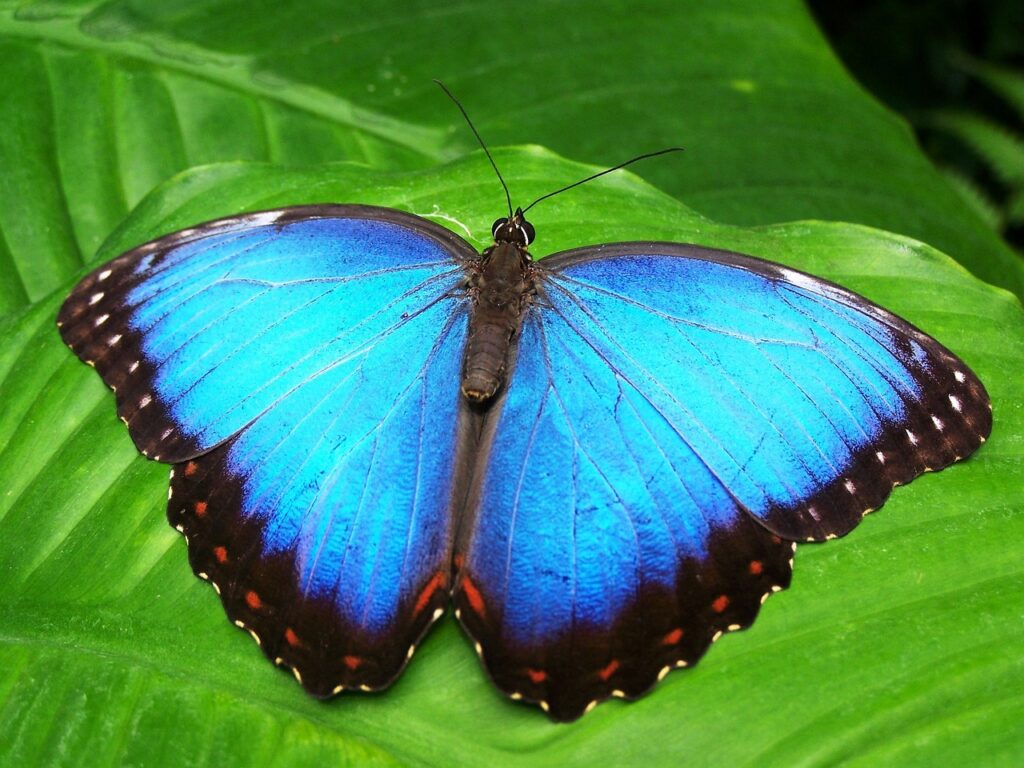MORPHO BUTTERFLY
Morpho Nymphalidae

LENGTH

20 cm
WEIGHT

4 g
LIFESPAN

3 months
The morpho butterfly is characteristic for its striking blue colour. This species is severely threatened by deforestation of tropical forests. In addition, because of their bright colour there are many collectors who capture them for display.
General characteristics
The morpho butterfly is remarkable for its large size, and its striking blue colour, although they are not actually blue. This phenomenon is called structural colouring, and consists of the reflection of light on the tiny scales on their wings. They are neotropical butterflies.
Feeding
Larvae feed on fabaceae, grasses, canelaceae, sapindaceae and many others. Adults feed on fermenting fruit fluids, decaying animals, tree sap, as well as fungi and nutrient-rich mud.
Behaviour
They are quite solitary, except during the mating season, when several individuals of this species can be found together. Males are very territorial and tend to chase their opponents.
Reproduction
This species usually lives alone, except when they have to reproduce, when they gather in very small groups. The larval eggs are pale green in colour. The caterpillars are reddish brown with bright yellow or lime green spots, and their chrysalis is pale green or jade green.
Threats
They are often bred en masse in breeding programmes. This species is considered endangered because they are used in the manufacture of jewellery and inlaid woodwork. They have their own slow, hopping flight pattern, as their wings are very large compared to their body.
Distribution
This species lives mainly in South America, Mexico and Central America. They inhabit forests, but sometimes come to sunny clearings for warmth. In the past, in Rio Negro, Brazil, people used to lure these butterflies to hunt them and use them as ornaments for ceremonial masks.

Did you know?
The name morpho also comes from mythology, and is related to Aphrodite and Venus.
Morpho means changed or modified. It is due to the fact that these butterflies seem to change shape when flying.
This species, the blue morpho, has sexual dimorphism, i.e. its physical appearance is different depending on the sex.
Conservation status
